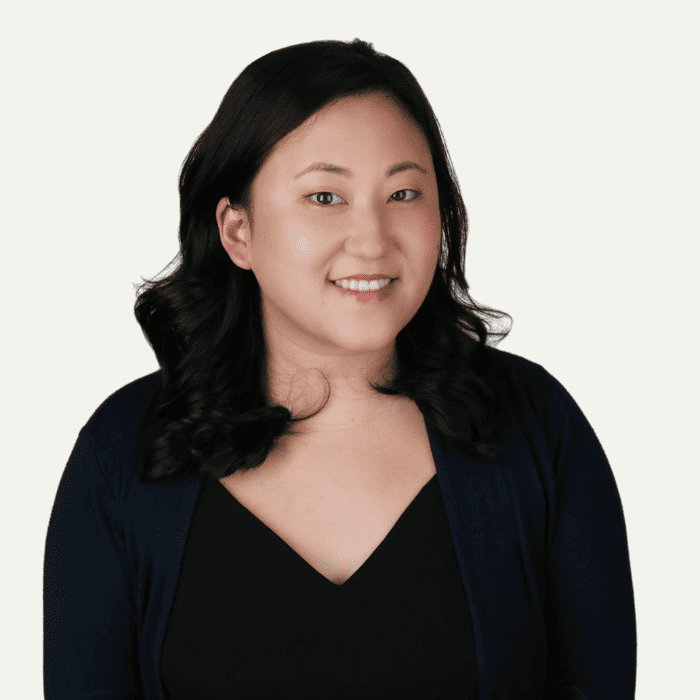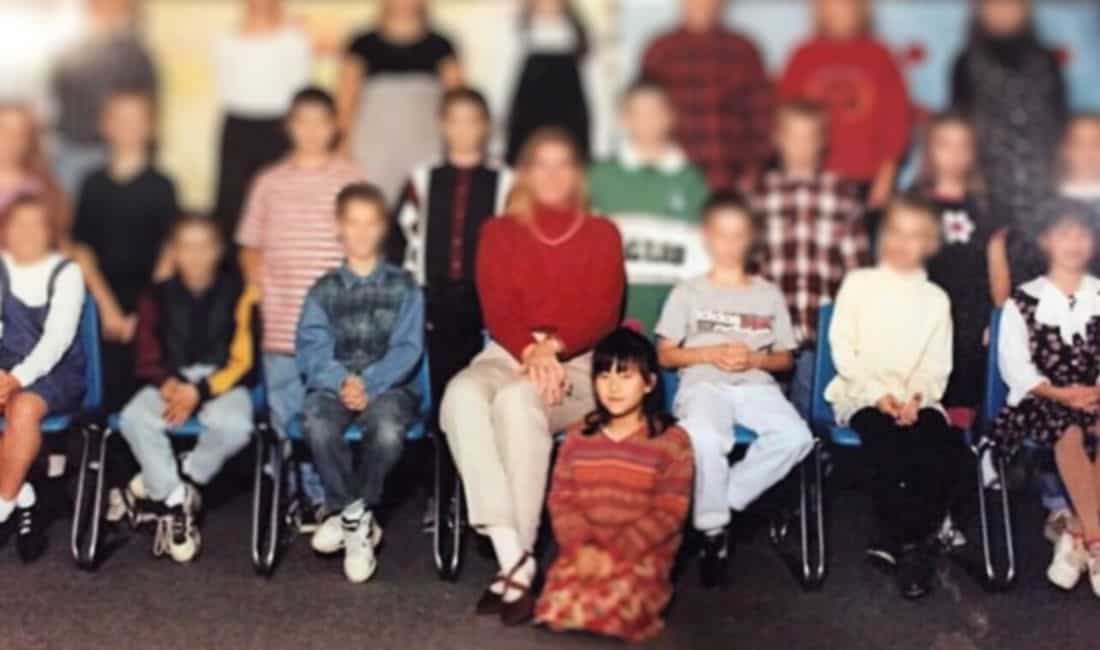
Unpacking AAPI Identity and Student Belonging
05/31/2023

Talking with Educator and Designer Sandra Jin
Sandra Jin is a career educator, designer, strategist, mother, and sister. She is also the daughter of Korean immigrants.
When Sandra was a child, her father was studying computer science in New Hampshire while simultaneously learning the English language. Sandra’s family heavily relied on his ability to learn effectively, especially in the face of numerous barriers. This experience of learning for survival profoundly influenced her approach to education and learning in general.
In light of Asian American and Pacific Islander Heritage Month—and as a fellow Asian-American immigrant myself—I wanted to learn how Sandra experienced school and how she carries those lessons forward today. She reflects on key moments from her life and offers timely advice for ensuring all students feel they belong and can excel in the classroom.
Note: This interview has been edited and condensed for clarity.
Feeling Seen
 VC: How has your Korean-American heritage influenced your journey in education?
VC: How has your Korean-American heritage influenced your journey in education?
SJ: One aspect of Korean culture that deeply resonates with me is the importance placed on respecting elders. Your elders are your elders forever. I remember sitting at the kids’ table in my twenties wondering how long I would be there, but now I appreciate the profound impact it has had on my perspective.
I see that there is always more for me to learn, and there are individuals who have progressed further in their journey, capable of sharing valuable wisdom with me.
VC: On that note, what did you bring from your experiences as a child or student into your future professional roles as a teacher, intervention coordinator, content specialist, and program strategist?
SJ: I have a vivid memory from fourth grade. That year, I was placed in a class with a teacher who was young, with blond hair and red lipstick. I was initially so happy to be in her class. I thought she was amazing. However, as time went on, I started feeling a growing sense that she didn’t see me or that she didn’t see me in a positive light.
Years later, I stumbled upon a class photo from that fourth-grade year.
Seeing that photo was confirmation that my experience was real. In the picture, the students were either sitting on chairs or standing, with the teacher sitting in the middle. I was the only one sitting on the floor at the feet of my teacher and classmates.”

This experience heightened my sensitivity to the importance of students feeling a sense of belonging in the classroom, being seen, heard, and valued for who they are. It made me realize that while academic support and interventions are crucial, they can only do so much if students don’t feel like they belong. It’s the small daily interactions, like attentive listening, affirming students, and celebrating their unique qualities, that truly make a difference.
Seeing “the System”
VC: Today, you have an important role in supporting school systems and educators across the country as they work to shift how education supports the potential in all students. In what ways does your Korean-American heritage shape your approach to that work?
SJ: I believe there is a strong connection between the Korean-American immigrant experience and the work I am doing here at Leading Educators. Academically, my parents were incredibly supportive. My brilliant mother, who was a kindergarten teacher in Korea, helped me with my math homework all the way through high school calculus. I felt safe and supported at home.
 However, there was a noticeable cultural contrast between the psychological safety I felt at home and the lack of it in school. I knew that language barriers prevented my parents from navigating the school system on my behalf, so I felt immense pressure to understand and excel within this complex system.
However, there was a noticeable cultural contrast between the psychological safety I felt at home and the lack of it in school. I knew that language barriers prevented my parents from navigating the school system on my behalf, so I felt immense pressure to understand and excel within this complex system.
Even in elementary school, I remember finishing my work early and sitting there trying to figure out the teachers’ schedules, wondering when they had time to rest or eat lunch, how they prepared lessons, and if they did so at home or during off periods.
It was like playing a game of uncovering the underlying workings of the system that developed out of the pressure I put on myself to try to navigate the system on my own.”
This mindset has stayed with me, shaping my approach to interpreting and analyzing the world. It ultimately led me to the work I’m doing now, where I analyze and design systems, develop strategy, and make necessary pivots along the way.
VC: What steps do you think school systems and educators should consider taking to create belonging and academic access?
SJ: I came across this fascinating research on instruction for multilingual learners in regular classrooms. It was from the American Educational Research Journal and struck a chord with me. The researcher examined the experiences of multilingual learners, including Caribbean and Korean students, across different classrooms. It was the first study that actually brought me to tears. I was so moved by the ways this one teacher, in particular, showed up for her multilingual learners. She engaged with them and gave them space to contribute to the culture of the classroom, and the impact that had on her students was profound.
As an educator, it’s crucial to be relentless in finding ways for all students, especially those who are easily overlooked, to fully engage and contribute. Providing access points and incorporating their experiences and practices are essential.”
Another aspect I consider, also highlighted in the study, is the importance of an educator modeling the curiosity, interest, and compassion that they want their students to exhibit towards each other. Whether they’re in second grade or tenth grade, students are observing and learning from your example. By modeling acceptance and celebrating students, they internalize these behaviors and contribute to the classroom culture you create.
There are so many examples and resources available on how to cultivate a strong classroom community. We have to be curious, seek out these resources, and continuously learn. It all starts with having the right mindset—believing in the brilliance of our students, showing genuine interest, and finding safe and meaningful ways to connect with them. Once we establish that foundation, it becomes the natural next step to keep nurturing that mindset and pursuing it further.
Growing Visibility of AAPI Identity
VC: Looking ahead, how would you like to see AAPI identity, perspectives, and experiences honored in the broader education system?
SJ: AAPI represents one of the largest racial groups in the world, and understanding their heritage offers a broader and more comprehensive view of the world, which is increasingly important as our global community becomes more interconnected.
Learning about AAPI heritage challenges stereotypes and biases in this country, fostering more accurate representation of individuals and groups. This, in turn, promotes a sense of belonging and pride among students while empowering school systems to address challenges and disparities more effectively.”
Embracing diverse perspectives and experiences enriches our understanding of history and our current reality. In the past, I hesitated to bring my identity into educational spaces, fearing that it would overshadow the larger narrative of racial injustice in our country. I’ve learned since that our unique identities, with all their struggles, achievements, and celebrations, can validate and support each other. Now, I advocate for greater representation of AAPI voices in curriculum, literature, and teaching staff, fostering connections across groups rather than isolation.
VC: How do you see these hopes show up in our work at Leading Educators?
SJ: I’m thrilled about Leading Educators expanding and partnering with districts that have a higher population of AAPI students. Additionally, I felt honored to work with Yakima School District for the last two years, a district with a significant population of multilingual learners, mostly Spanish-speaking. Drawing on my own multilingual background was incredibly rewarding.
In our first year, we focused on building a shared, contextualized understanding of equity in Yakima, connecting learning to multilingual learners’ voices, perspectives, and histories. We designed and facilitated this professional learning for school-based staff and also involved every leader, from facility administrators to the director of enrollment and the program manager of food and nutrition services. We were able to ground in the belief that every adult working in the district must orient their role, goals, and work to amplify and honor their multilingual learner voices and identities.
We recognized that creating inclusive educational experiences for multilingual learners in Yakima is not solely the responsibility of teachers or limited to classroom instruction. It requires a commitment from every team and leader in the district. This alignment with my beliefs was personally significant and meaningful.
VC: Wow, what a powerful note to end on! Thank you so much for your time.
Reflect
As you reflect on Sandra’s story and your own work, we encourage you to explore Teaching for Equity, our action guide for integrating academics, well-being, and belonging in the classroom. We also encourage you to reflect on the following questions:
- How can you celebrate and embrace the cultural heritage of your students, like Sandra Jin’s experience as a Korean-American, to provide windows and mirrors?
- What can be done to ensure that students’ early classroom experiences are positive and inclusive, allowing them to feel valued, seen, and heard, and setting them up for long-term academic achievement?
- How can you model curiosity and compassion for greater representation of AAPI voices in curriculum, instruction, and the teaching profession?








